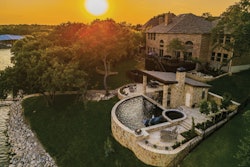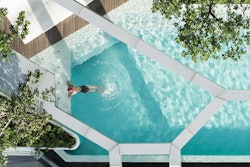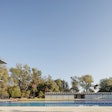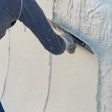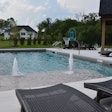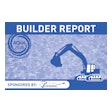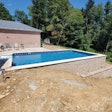
As someone who is decidedly not handy at all, I’ve always respected and even envied people who are accomplished at DIY projects. There’s something so admirable about the can-do spirit and inventiveness of people who take pride in “doing it yourself.”
When it comes to DIY swimming pools, however, my admiration gives way to a more cautious way of thinking. Having covered the pool/spa/aquatics industries for most of my adult life, I’ve come to appreciate the nuances, complexities and risks involved in containing and controlling water for recreational and aesthetic purposes.
Our industry is filled with people who spend their entire careers working to master the art of aquatic design and construction. Many of those people will tell you that even after years of education and experience in the field, there is always more to know and ways to improve. The fact is, building a pool is a lot tougher than most people think, especially those who regard pools as glorified holes in the ground filled with water.
From an industry perspective, it’s easy to see how the DIY movement presents something of a conundrum. On one hand, homemade pools might serve as a sort of gateway into pool ownership. Even so-called “affordable” middle-class pools cost tens of thousands of dollars, and DIY pools open up the market to consumers who want the aquatic experience but don’t have the resources to afford a pool installed by a professional contractor.
In that sense, the industry might favorably regard DIY projects as a positive influence on prospective customers. Also, there can be little doubt that in the course of maintaining a homemade vessel, homeowners will become aftermarket service and retail customers.
RELATED: PHOTO: A Homeowner's DIY Project Gone Wrong
With all of those potential positives in mind, there’s a dark side of the DIY equation that genuinely worries me. First, there’s the class of just fl at-out irresponsible attempts at making a pool. Lining the bed of a pickup with Visqueen, for example, and filling it with water, with no capacity for filtration, cleaning or treatment, is a highly questionable practice when it comes to health and safety. Not to mention, using your pickup as a pool shell is a great way to damage the vehicle itself.
Then there’s the class of projects where structures such as shipping containers or metallic stock tanks are repurposed to create pools. The problem there is that those containers were not created to serve as swimming pools and maybe not be suitable for constant contact with treated water and humans. And a shipping container is not designed and built for safe entry and egress, for example, and will have to be retrofitted with plumbing and other accouterment associated with traditional swimming pools.
Most concerning of all are the myriad problems that can arise when a pool is improperly designed, engineered and installed. Filtration and water treatment alone can be surprisingly tricky, and in situations where the systems do not adequately clean, balance and sanitize water, problems can range from poor water quality to outright biological hazards. Add to that proper electrical installation, hydraulics, structural issues and basic safety concerns, like suction entrapment avoidance, and all together, there’s an abundance of hazard points that make DIY pools a risky proposition, and one that could potentially drive people away from the concept of pool ownership.
RELATED: A Homemade Pool Cooling System
That said, I would be remiss if I did not mention that there are indeed instances where DIY projects are not only successful, but even expand the concept of pool design. For one example, take a look at the ambitious, creative project hand-sculpted on the banks of the Rock River, which we cover on p. 43. While such carefully executed projects are rare, they do make the case that DIY projects should not be altogether eradicated.
With all of that in mind, I do not have an answer to the question of how the professional pool and spa industry should position itself relative to the DIY market. On one hand, it makes sense to point out the hazards of leaving professionals out of the process, but on the other, we certainly don’t want to drive people away from the water be stoking fear. Or, we could simply ignore the whole thing and not worry about it, but we know that when it comes to water, ignorance is seldom bliss.
If anything is certain, we know that DIY enthusiasts crave the empowerment of self-sufficiency. Perhaps making the case that pools are no place for amateurs and that our industry stands at the ready to do the job correctly is the most empowering message of all?

























